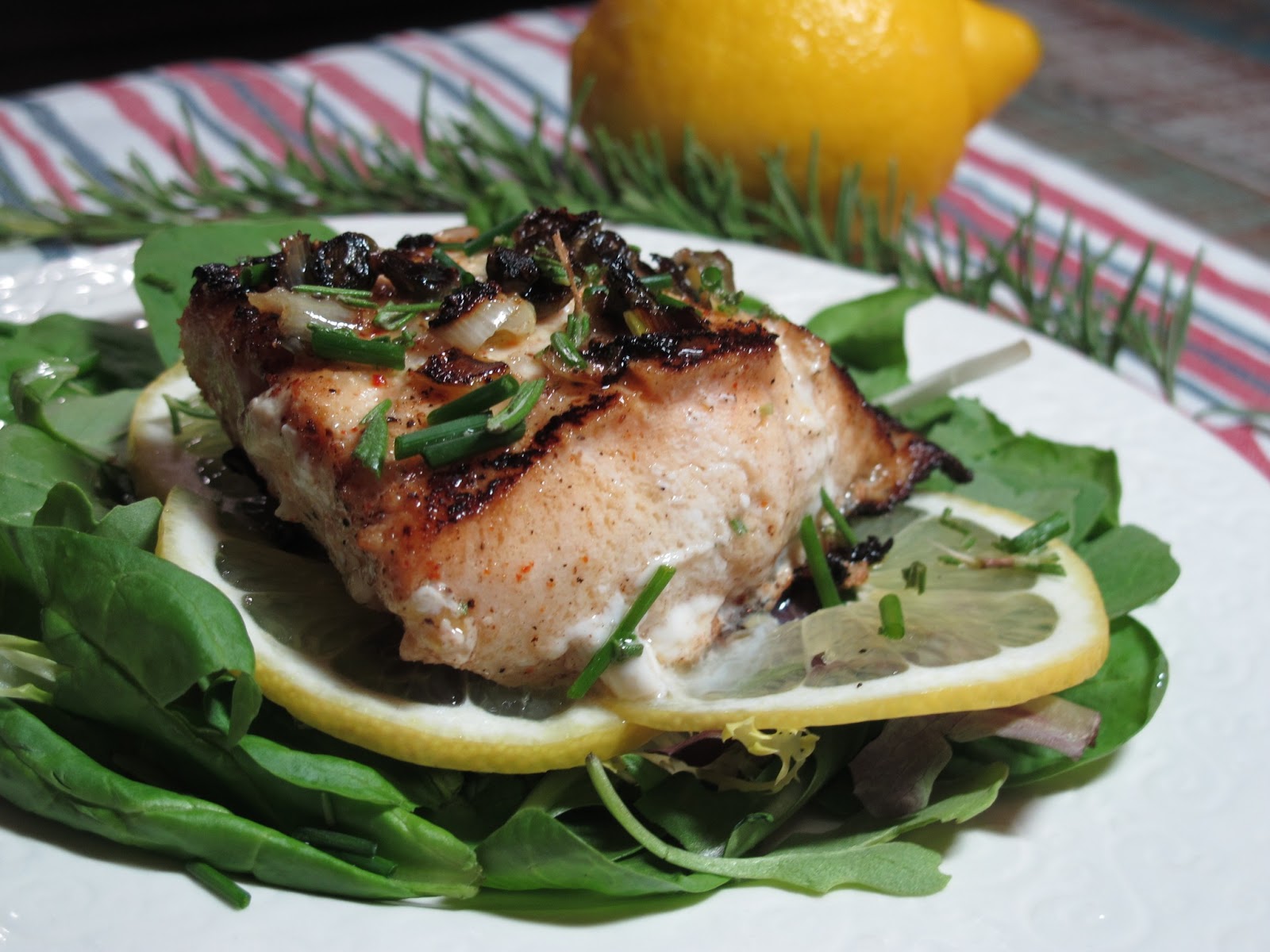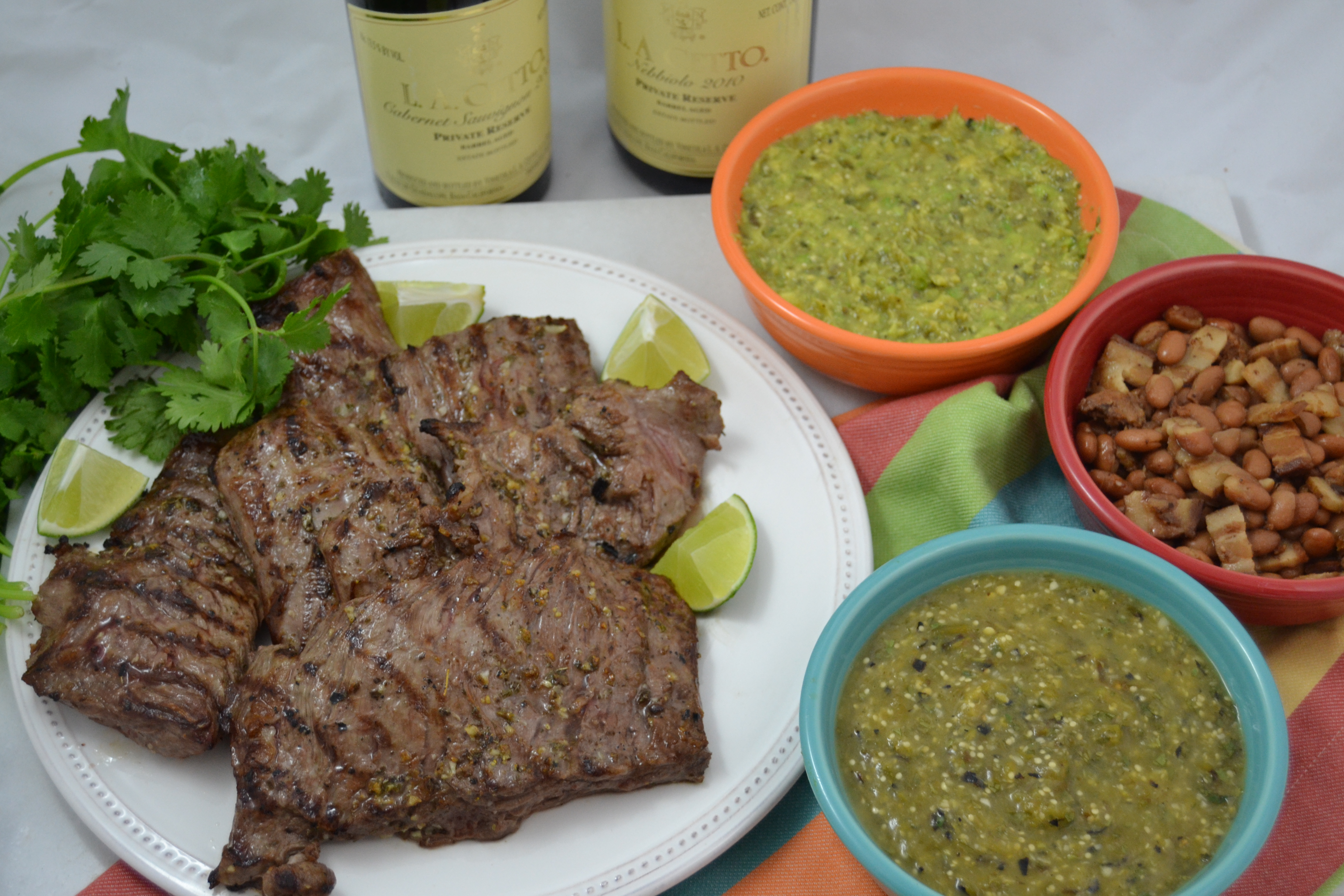From my perspective, it was a matter of beauty and the beast, although the beast part was not readily apparent from its packaging and beauty is always subjective and sometimes fleeting. From my sous chef’s perspective, it was a matter of the bumbler and the beast.
While rummaging for swordfish in the frozen foods section of Trader Joe’s, I came across one of those “special” TJ foods that often pique my curiosity. You know the kind: something totally unknown or, at best, vaguely familiar, but marketed by TJ to sound intriguing, adventuresome, and edible, if not delicious.
 |
| Does anyone know a good dentist? |
Alas, TJ had no swordfish (which I could not believe since I normally wade through piles of it when looking for other fish), but it did have spotted Norwegian Wolffish (Anarchichas Minor) that, according to a TJ stockman serving that moment as an enlightened fishmonger, would be a good substitute. The package he handed me had an appealing label that showed the Wolffish in profile (clearly its best viewpoint as the photos demonstrate) and identified it as having meat that was white and firm and a taste redolent of lobster, crab, and shellfish. Plus it can be cooked in a number of ways: baked, fried, grilled, poached, steamed or sautéed. It all sounded good to me, so Norwegian Wolffish would stand-in for swordfish in this week’s “French Fridays with Dorie” cooking experience.
 |
| Julia handled Monkfish much better than I do Wolffish |
 |
| Not your average lap pet |
According to TJ and other online sources, the Norwegian Wolffish is a sharp toothed, cold water fish whose flavor derives from its diet of shellfish, such as mussels, scallops, sea urchins, and crabs. Norwegian Wolffish is known to reach lengths of up to 7 feet and weigh up to 40 pounds. Their fang-like teeth are part of a rather stout head and large mouth, all the better to dislodge mollusks and crustaceans from their familial homes on the rocky bottoms of near freezing deep waters like the Barents Sea above Norway or to dismember the fingers of careless fisherman. Despite its dental and facial shortcomings, the Anarchichas Minor variety is quite fashionable with leopard-like spots on its scale-less, silky-smooth skin. Armed with two fillets of this beast, I strode from TJ’s determined to make a dish worthy of Dorie’s praise.
This week’s recipe from Around My French Table by Dorie Greenspan is very simple: sautéed or grilled swordfish served with an herb salad tossed with a splendid Dijon vinaigrette. This is something that can easily be whipped up after a long day at the office and gives the impression that you are eating light and healthy. And for those who used swordfish or did not suffer a culinary brain cramp, it probably was all those things Dorie intended.
 |
| Looks can be deceiving |
Out of necessity, inquisitiveness, or downright contrariness, I often substitute ingredients, usually with good results. But my experience with Norwegian Wolffish reminds that there are a number of universal cooking guidelines that should always be observed. First, make sure that what you substitute does not compromise the integrity of the recipe. Second, check cooking times and methods for the substitute since they may not be the same as for the original. Third, when defrosting frozen fish, follow the instructions on the package. If there are none, at least take it out of its original packaging, pat dry, place on a plate, cover with plastic wrap, and leave it in the refrigerator overnight. Defrosting in the original packaging causes the fish to absorb lots of unwanted and likely unpleasant liquid. Fourth, when you want fish to have a crispy skin, dry the skin first, cook in a hot pan, add the fish to the pan skin side down and, using a flexible spatula, press on the flesh until the fillet flattens out (this makes sure all the skin is in contact with the pan), and don’t flip back and forth, just let it cook on the skin side until the last couple of minutes when you can finish on the flesh side.
.jpg) |
| Rafa is looking for a better recipe and instructions |
I most certainly violated guidelines two, three and four. Guideline Two: Dorie’s recipe calls for a seven minute sauté whereas TJ’s recipe calls for twenty minutes baking in the oven. I sautéed for seven minutes and it was not enough. Guideline Three: I defrosted overnight in the airtight packaging and the fish was swimming in liquid the next day. Guideline Four: I cooked the fish flesh side down for the most part. The result was a tough, slimy, unpleasant looking skin, an undercooked fish with areas that looked and felt gelatinous, and none of the succulent flavors of lobster or other shellfish that I was craving. Lesson learned and I will give the Norwegian Wolffish another try. At least the salad was excellent.


.jpg)






Sigh – direction following does not seem to be a particular talent of mine either… I think it keeps like interesting.
I am sorry that your fish did not redeem itself in the end – at least you enjoyed your salad 🙂